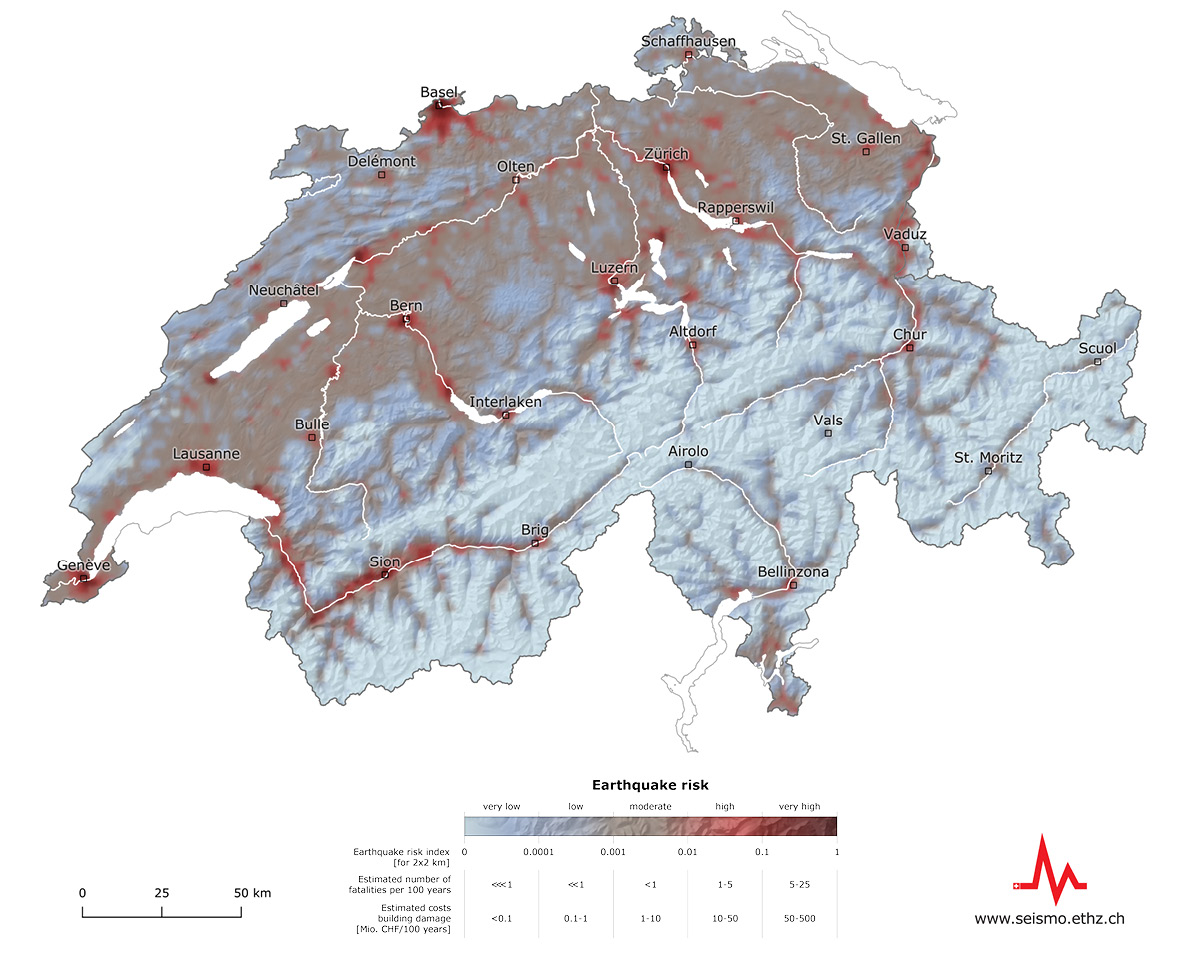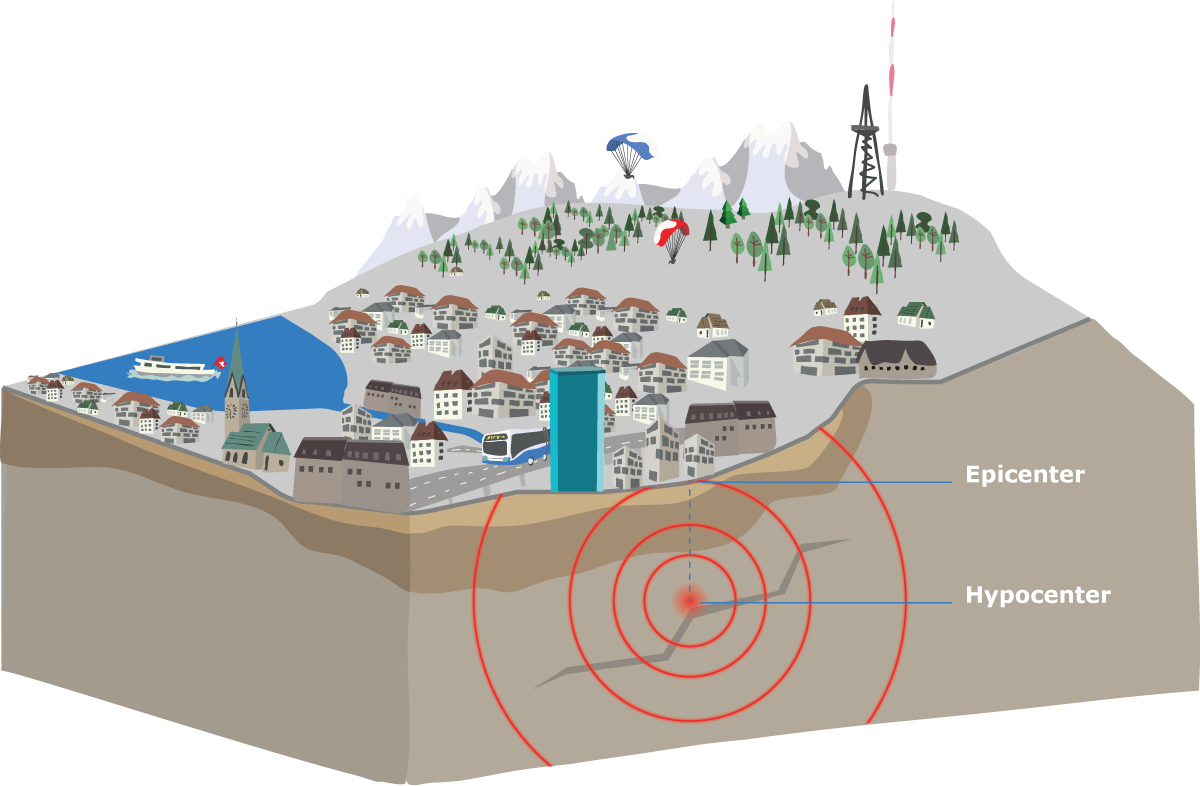Effects of earthquakes
The effects of an earthquake depend on its magnitude, depth, and location. As a rule of thumb, the bigger the magnitude and the closer the earthquake to the subsurface as well as to (densely) populated areas, the greater their potential consequences.
Earthquake risk (or seismic risk) quantifies the possible effects of earthquakes on buildings and the associated financial and human losses. To determine the earthquake risk, detailed information about the earthquake hazard, the influence of local subsoil, the vulnerability of buildings, and the people and assets affected are combined in a model.
- Over a 100-year period, earthquakes in Switzerland can be expected to cause economic damage of CHF 11 to 44 billion to buildings and their contents (such as furniture) alone.
- In total, around 150 to 1,600 people would lose their lives and an estimated 40,000 to 175,000 would become homeless on a short-term or long-term basis.
- On top of this, there is damage to infrastructure and losses due to other effects of earthquakes such as landslides, fires or business interruptions.
However, these are not yet included in the model. The earthquake risk is not evenly distributed over time but is dominated by rare, catastrophic earthquakes that usually happen without warning.
- Detailed information about the earthquake risk in Switzerland can be found here.
- A series of earthquake scenarios illustrating potential effects of earthquakes are presented here.

